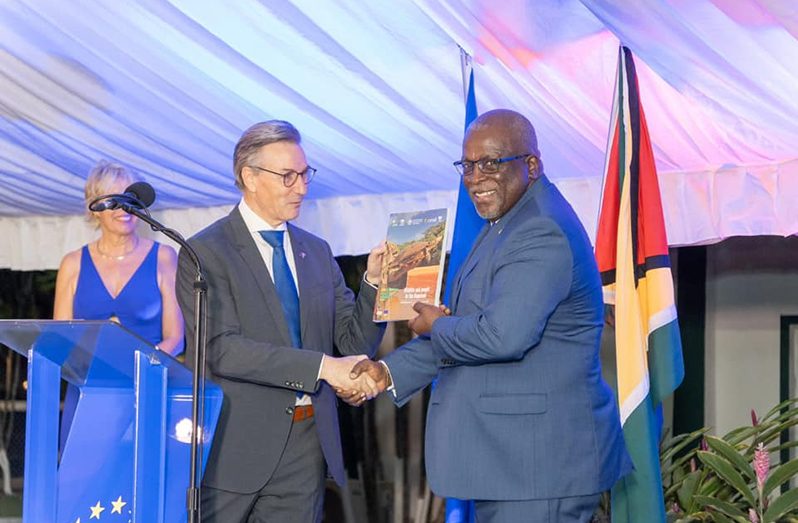IN celebration of the International Day for Biological Diversity, the eagerly awaited book, ‘Wildlife and People in the Rupununi’ – A Comprehensive Assessment based on Science and Local Knowledge, has been officially published online.
This publication, which chronicles the extensive technical and scientific work of the Sustainable Wildlife Management (SWM) Programme in Guyana’s Region 9 from 2018 to 2023, is a testament to the region’s rich biodiversity and the collaborative efforts in wildlife conservation.
The book, funded by the European Union, features engaging articles on the status of wildlife populations, local uses of wildlife, human-wildlife coexistence, and conservation initiatives in the Rupununi. It is the result of a collaborative effort led by community members, supported by local civil society organisations, the Guyana Wildlife Conservation and Management Commission (GWCMC), and the National Fisheries Department.
A first copy of the book was presented to Guyana’s Prime Minister, Mark Phillips, by René van Nes, the EU ambassador to Guyana, during the Europe Day celebration in Georgetown on May 9. “We have extended this programme because it is very successful,” said Van Nes. “It’s one of my favourites. I’m pleased to present one of the very first copies of this beautiful book to the Prime Minister.”

Spanning almost 300 pages and featuring over 100 professional photographs, the publication presents a detailed reference for wildlife population assessments and explores the dynamics of human-wildlife coexistence.
One of the book’s central themes is empowering local communities to become stewards of conservation, highlighting exemplary initiatives like the management of river turtles in the Yupukari community. This model of community-led management aims to preserve species while allowing for sustainable use.
The book also addresses conflicts between people, livestock, and carnivores, contributing valuable information to GWCMC’s efforts in conflict mitigation. A total of 100 printed copies are being distributed to key stakeholders involved in the SWM Programme, including authors and local partners.
The Rupununi region, known as the ‘Land of Giants’ due to its large-bodied neotropical species such as jaguars, giant anteaters, and giant river turtles, is one of the most biodiverse areas in Guyana.
The SWM Programme, which funds and coordinates the project, is a major international initiative aimed at improving the conservation and sustainable use of wildlife in various ecosystems. This initiative is supported by a consortium of partners, including the Center for International Forestry Research and World Agroforestry (CIFOR-ICRAF), the Food and Agriculture Organization of the United Nations (FAO), the French Agricultural Research Centre for International Development (CIRAD), and the Wildlife Conservation Society (WCS).
Through this comprehensive assessment and the active involvement of local communities, ‘Wildlife and People in the Rupununi’ underscores the critical importance of sustainable wildlife management and the collective efforts required to protect Guyana’s natural heritage.














